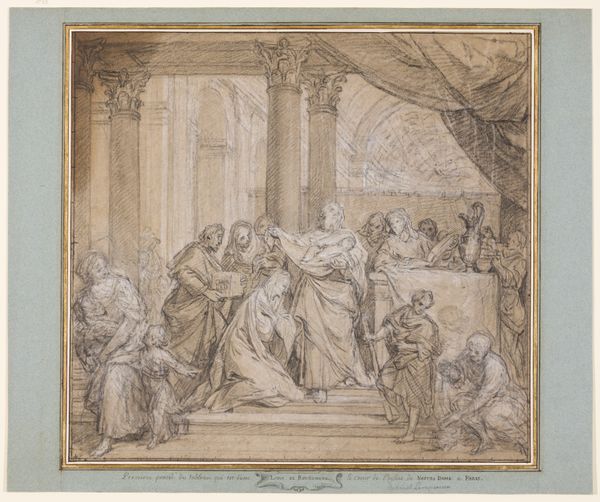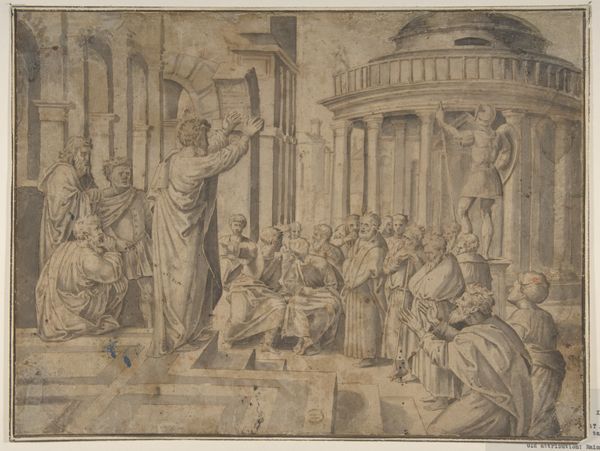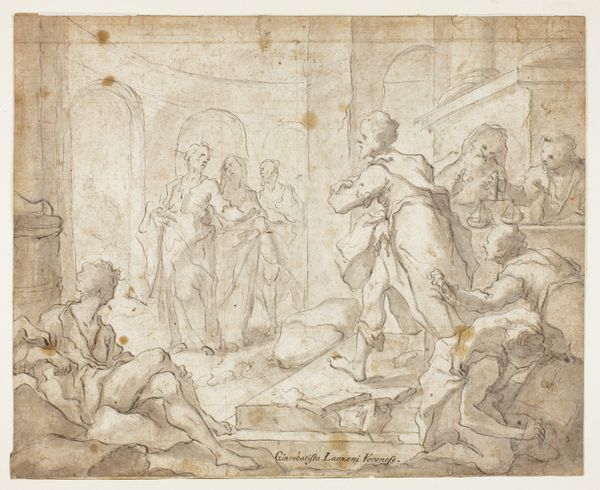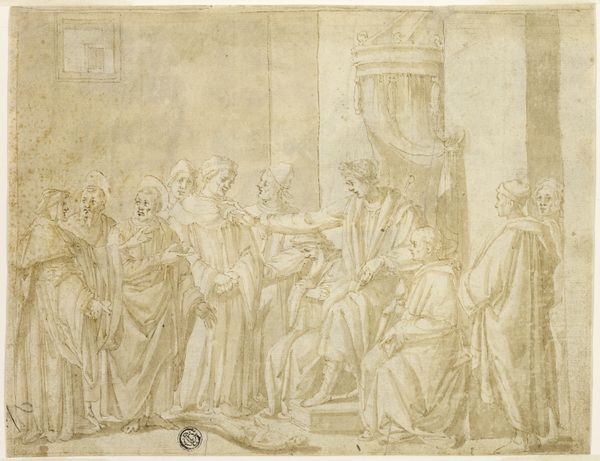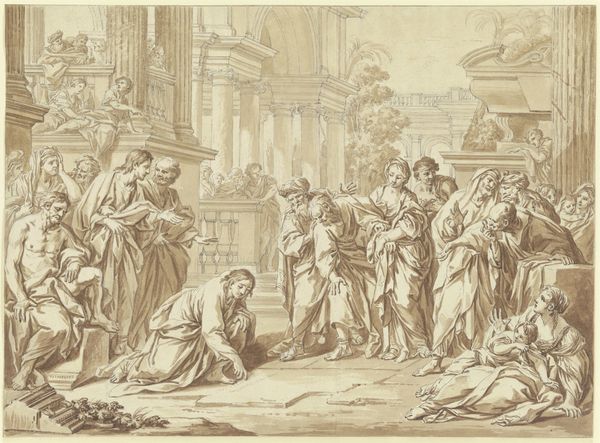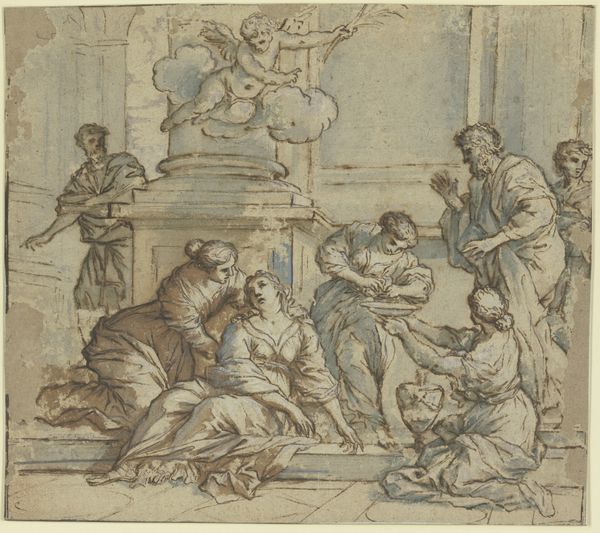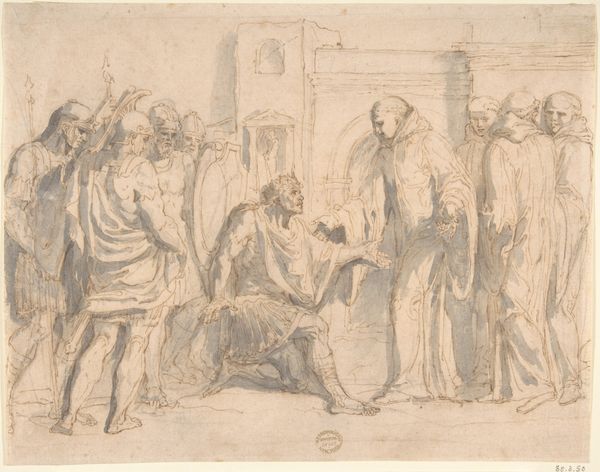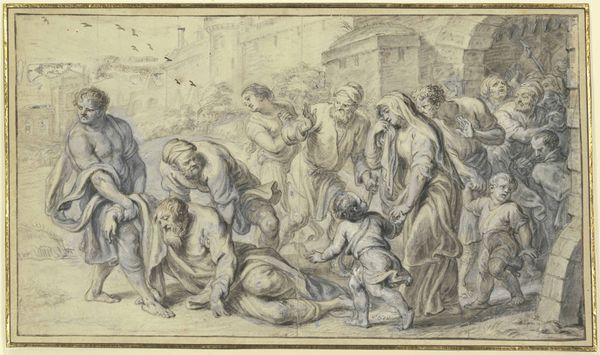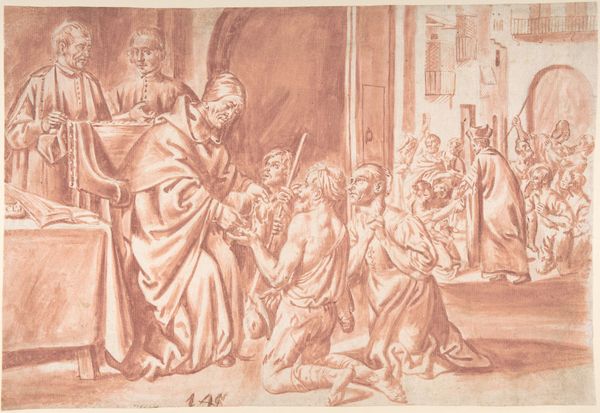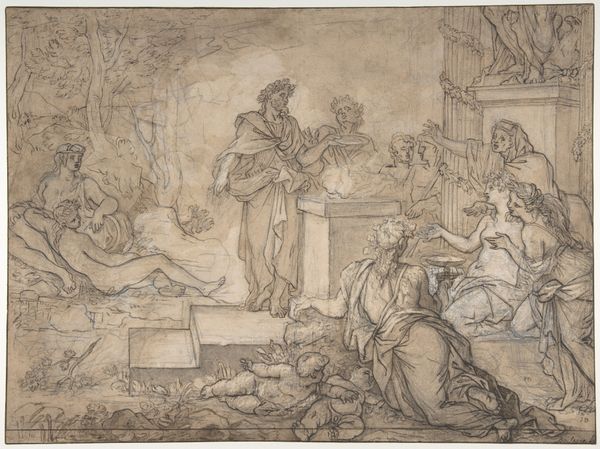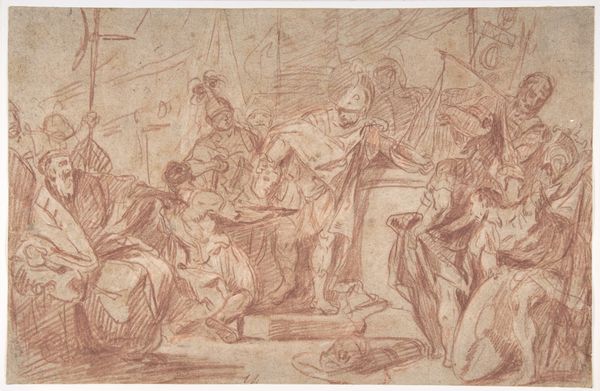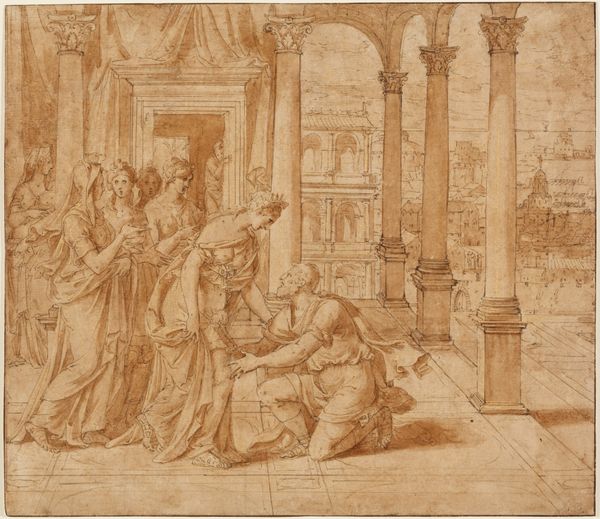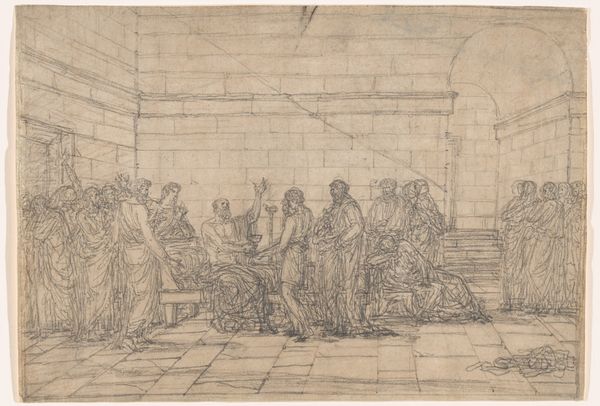
Saint Philip Healing the Cripple in Samaria 1652 - 1658
0:00
0:00
drawing, paper, pencil, pen
#
drawing
#
baroque
#
figuration
#
paper
#
11_renaissance
#
oil painting
#
pencil
#
pen
#
history-painting
Dimensions: 14 x 17 1/8 in. (35.6 x 43.5 cm)
Copyright: Public Domain
Curator: What we have here is Jacob Jordaens' "Saint Philip Healing the Cripple in Samaria," a drawing rendered between 1652 and 1658. He worked with pen, pencil, and paper to produce this representation of the well-known Biblical tale. Editor: My first impression is the artist certainly prioritized dynamism. There is movement everywhere! It almost feels like a snapshot capturing a burst of activity more than a serene composition. The earthy red tones add to this impression of a visceral moment. Curator: It's important to recall the significance of such images at this moment in European history, however. In Counter-Reformation Europe, vivid, emotionally charged art was consciously employed to reinforce faith, particularly in the face of Protestant iconoclasm. Jordaens, in a city with strong Protestant influences, was keenly aware of this function of imagery. Editor: Indeed. And we see some classic motifs at work. Notice how the characters surrounding Philip almost seem to be in a state of ecstatic suffering and supplication, which can remind the viewer about universally held ideas around human suffering and divine intervention. The outstretched hands, the raised gazes. They're a symbol of hopeful reliance. Curator: Right, and the architecture frames the scene. The arches and columns suggest a sense of divine sanction and place this miracle within the accepted established order of the era. The institution of the Church, by means of the Baroque aesthetic, further displays it as the source of this holy authority. Editor: But look at the cripple himself; the twisted posture of his body shows so powerfully both vulnerability and the desire for spiritual transformation. He’s not just physically afflicted, he’s an embodiment of the need for something beyond himself, beyond the mundane, wouldn’t you say? Curator: Undoubtedly, and this, in turn, validates and bolsters the public image and role of those individuals and institutions seen as capable of fulfilling that need, thereby enhancing their public standing within society. Editor: So in Jordaens' scene, the suffering isn’t simply misery, it’s a necessary precursor for spiritual awakening. Curator: Yes, in a way, these representations helped establish and perpetuate certain power structures. Editor: Thinking about it all, I’m still moved by the intensity of the human drama at play here. Curator: Absolutely, a powerful insight into the era and art's capacity to negotiate these complex needs and requirements.
Comments
No comments
Be the first to comment and join the conversation on the ultimate creative platform.

